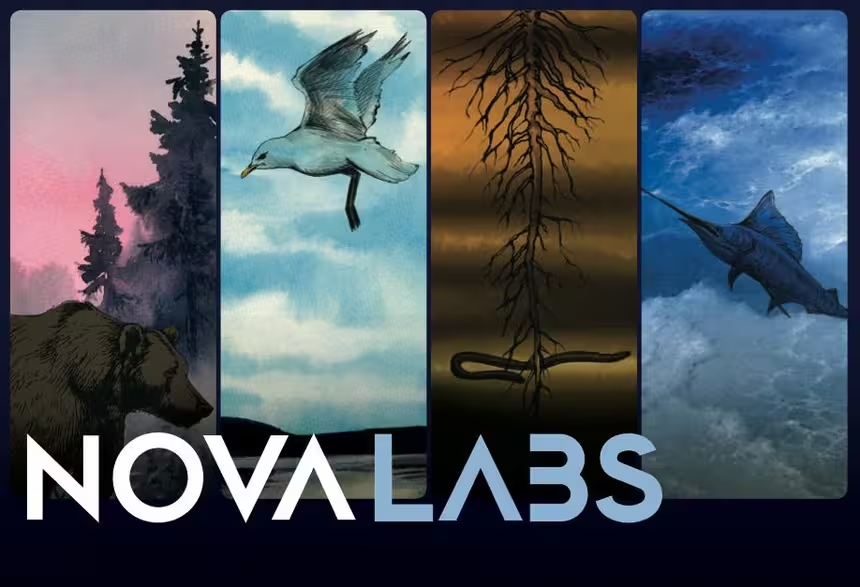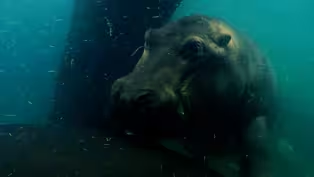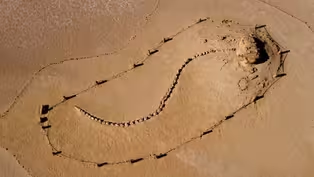
The whale that could walk
Clip: Season 51 Episode 1 | 2m 48sVideo has Closed Captions
Today’s whales look nothing like their ancient ancestor.
A small furry carnivore that lived both on land and sea is the ancestor of modern whales.
Problems playing video? | Closed Captioning Feedback
Problems playing video? | Closed Captioning Feedback
National Corporate funding for NOVA is provided by Carlisle Companies and Viking Cruises. Major funding for NOVA is provided by the NOVA Science Trust, the Corporation for Public Broadcasting, and PBS viewers.

The whale that could walk
Clip: Season 51 Episode 1 | 2m 48sVideo has Closed Captions
A small furry carnivore that lived both on land and sea is the ancestor of modern whales.
Problems playing video? | Closed Captioning Feedback
How to Watch NOVA
NOVA is available to stream on pbs.org and the free PBS App, available on iPhone, Apple TV, Android TV, Android smartphones, Amazon Fire TV, Amazon Fire Tablet, Roku, Samsung Smart TV, and Vizio.
Buy Now

NOVA Labs
NOVA Labs is a free digital platform that engages teens and lifelong learners in games and interactives that foster authentic scientific exploration. Participants take part in real-world investigations by visualizing, analyzing, and playing with the same data that scientists use.Providing Support for PBS.org
Learn Moreabout PBS online sponsorship- [Narrator] In 1978, Philip went to Pakistan to search for prehistoric horses.
Instead, his team unearthed the remains of a mysterious creature.
The team named the strange animal pakicetus.
It's about 50 million years old.
(gentle music) When Philip took a closer look, he spotted something unexpected in the creature's ear.
- So when you look at this covering bone, covering the ear, it's very dense, it's thickened, it has a sloping surface on this side, and in modern mammals, those are only found in whales.
And why?
To enable them to hear in water.
- [Narrator] This ear bone, unique to whales and dolphins, helps them locate the direction of sounds underwater.
It's proof of pakicetus' pedigree.
- This bone was the key to understanding that pakicetus is a whale.
Well, that made it the oldest fossil whale anybody ever found.
- [Narrator] It was groundbreaking, and as they discovered more pakicetus fossils, they realized something else: this whale could walk.
(gentle music) - Pakicetus is an animal a little bigger than a wolf, probably built approximately like a wolf.
It has teeth like a carnivorous mammal.
- [Narrator] But unlike a wolf that has claws on the ends of its toes, pakicetus had tiny hooves.
(gentle music) Pakicetus was a carnivore that hunted on land, but its anatomy suggests it had adapted to living in water.
Its long snout, full of sharp teeth, also allowed it to probe shallow river beds for prey.
Its eyes were squeezed onto the top of its head so it could keep watch while swimming.
And some scientists think markings on its foot bones are evidence it had webbing between its toes, allowing it to hunt underwater.
- And of course, it didn't take long until they moved into the water more permanently.
- [Narrator] Pakicetus marks the beginning of an eventful journey from land animals to today's gigantic whales.
(gentle music)
Ancient whale fossils found in the desert
Video has Closed Captions
Clip: S51 Ep1 | 2m 10s | What is this whale skeleton doing in the Egyptian Sahara Desert? (2m 10s)
How Did Whales Evolve From Land Mammals?
Video has Closed Captions
Clip: S51 Ep1 | 3m 8s | The story of whales’ evolution from land mammals is hidden in their genes. (3m 8s)
This Massive Skeleton Belongs to an Ancient Whale
Video has Closed Captions
Clip: S51 Ep1 | 2m 28s | At first, scientists thought it was a gigantic marine reptile. (2m 28s)
When Whales Could Walk Preview
Video has Closed Captions
Preview: S51 Ep1 | 30s | Giant fossils uncovered in the Sahara Desert reveal new secrets of how whales evolved. (30s)
Providing Support for PBS.org
Learn Moreabout PBS online sponsorship
- Science and Nature

Capturing the splendor of the natural world, from the African plains to the Antarctic ice.

- Science and Nature

Learn how centuries of knowledge helped our ancestors understand the mysteries of space.












Support for PBS provided by:
National Corporate funding for NOVA is provided by Carlisle Companies and Viking Cruises. Major funding for NOVA is provided by the NOVA Science Trust, the Corporation for Public Broadcasting, and PBS viewers.





